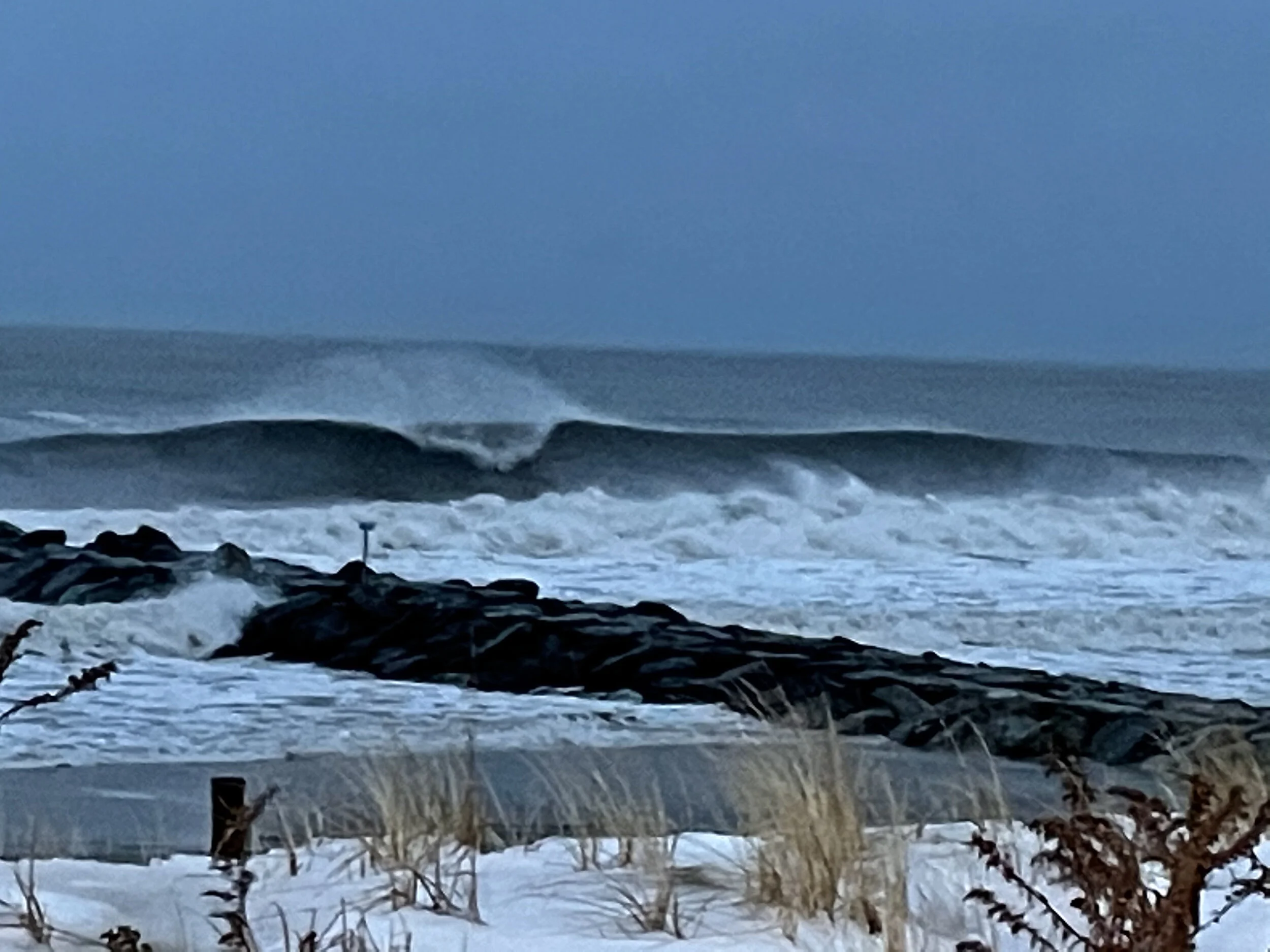Heya! I’ve been in a deep dissertation cave and not posting much on the blog. I did put this little edit together from Winter Storm Orlena back in February. We’ve had a pretty miserable winter since then with tons of high pressure ridges pushing swell away off our coasts. This, however, was a really fun snow surfing event. The video starts from inside the clubhouse where I’m watching The Search by Sonny Miller (1993) featuring the fantastic surfing of Tom Curren. This was my favorite surf video to watch growing up because Curren has such great form to imitate — the low compressed stance and impeccable timing for tubes and turns. I’m a goofy foot and have had zero problem integrating some of the insights I get from watching Tom (who is regular foot) surf into my own surfing. This is a bit of advice for everyone out there: the person doesn’t have to have the same stance or body type (or even gender — I love learning from great women surfers too) as you for you to get something out of their surfing. The thing you have in common with that great surfer: you’re both human beings, usually with two legs, two arms, two eyes, one nose, one set of hips, etc. Different surfers have developed different ways of placing these body parts vis a vis board and wave and some might appeal to you more than others. If it appeals to you, try it out! Try it first at home and then go plan to put it into practice in your own surfing. This has been my method since I was 12 years old and I can say in full confidence that it works.
On this note, the “surfing” in this video is GoPro pov. When you’re watching this think about what I’m looking at when I’m out there. You don’t see much of my feet or my surfboard except the nose because I’m always LOOKING AT THE WAVE. Or if I’m paddling back out I’m looking into waves frothing on seeing them come at me in their tubing formations. This is the best way to understand where to sit to take off and what to reasonably expect to find as you ride down the line. Remember that surfing is not about being in the moment — it’s about being ahead of time. Our brains, to use the words of the great philosopher Daniel C. Dennett, are anticipation machines (Consciousness, Explained, 2011). When they’re functioning at their best they’re seeing the road ahead and making moves that will benefit us in the short and the long term. In order to anticipate what any wave will do you have to be able to understand and see waves as rights, lefts, and closeouts, as fast, mushy, tubing, or sectioning. The more angles you watch waves from — the beach, the shoulder, the inside, the more patterns you’re uploading into your internal software to write the programs that will help you ride these suckers! Notice that I begin the vid with a good surf check from shore so that I can see what the possibilities are before I put on my wetsuit. Nothing mystical about it! Waves are what we study in order to read them well. So get to it!
Fuzzy still from the early part of the morning. That looks like a wave that probably won’t pan out super well unless you’re on the far end, which would be the middle of the beach. The peak breaking has a right on it that looks like it will run into the jetty and the first part of the wave will “section off”. It’s the section section going to the left that would be the ticket on a wave like that.












